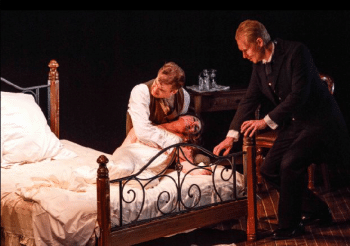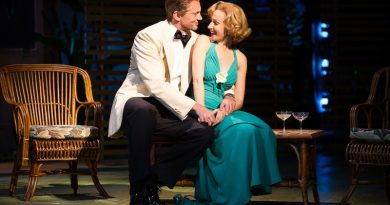Melbourne Opera: La Traviata
The cover of the program for Melbourne Opera’s La Traviata, which opened on Wednesday night at the Athenaeum Theatre, has a full-page photo of Guiseppe Verdi, the renegade composer of 1851, staring out from the cover, determined, against all odds, to follow his own path, passionately, personally and creatively.

When the opera opened in 1853, it was considered a fiasco, not only because of the ‘shocking’ moral affront but also because the lead female was considered too robust and healthy to be in the final stages of consumption. Needless to say, as with many major productions, once the problem had been adjusted, it went on to become a masterpiece.
On this 200th Anniversary of Guiseppe Verdi’s birth, and the 10th Anniversary of the Melbourne Opera Company, La Traviata is the most performed and loved opera in the world and the performances on Wednesday night will ensure that it maintains its status.
The voices of Antoinette Halloran as Violetta, Roy Best as Alfredo and Manfred Pohlenz as Germont could not be faulted as they filled the beautiful interior of the Athenaeum with the English version of the libretto, by Francesco Maria Piave. If he and Verdi had been sitting in one of the boxes, one could easily have felt it was the original theatre of 1853 as the curtain, magnificently painted with hands touching in a sea of red camellias, revealed a large cast and the familiar, emotive music began.
And the orchestra, conducted by Greg Hocking, played its part magnificently, never once being intrusive or over-powering the singers.
However, this production, like Verdi’s first, had its glitches. Though only minor and, basically, superficial, they have the power to detract from the overall impact.
In the first act, while Violetta was radiant in a magnificent red dress, the bodice appeared top heavy, as though it were moving without her and she had to walk like a Parisian model to hold it up. The costumes and make up for the chorus women were also an odd mix of extravagant and downright dowdy. A few more dancing lessons, especially for the men, wouldn’t go amiss either.
Then, the Baron introduces Alfredo. Surely, this man couldn’t be the lovesick man lusting after Violetta! I imagine Alfredo to look like Verdi’s photo on the program, but here’s a tall blond man with short back and sides in a penguin suit. Why not a different costume? Velvet perhaps, a beard, moustache, even a pony tail – anything to help this man, with the more than adequate voice, stand out from the crowd. But the real issue is that there was so little chemical interaction with Violetta that I felt like pressing the re-play button in case I’d missed something, like the feeling that this man was passionately in love.
Fortunately, Act 2 brought a change of clothing and more fluid movement and my irritation faded as the wonderful voices prevailed and the duets between Violetta and Alfredo, and Germont, excelled. But I wonder about the direction in Act 3, especially when Violetta lay fort so long while the cast stood watching like statues.
Finally, it was difficult to equate first act Violetta, who indicated she was feeling unwell with a wave of her hand towards her fevered brow, with the woman dying of consumption or grief in the third. Unless you were familiar with the story, it would have been hard to tell, as there had only been the suggestion of a cough. At one point, I felt Alfredo would surely sweep the dying woman into his arms, but there was a grasp and shuffle to a seat that was all but embarrassing
Melbourne Opera has a wonderful season ahead. An extra matinee has been added on Sunday 22 September and there’s a performance at the Alexander Theatre at Monash Uni on 11 October. With first night jitters over, plus the experienced direction of Suzanne Chaundy, it should go from strength to strength with its exceptional vocal talent.


The singing, the acting and the orchestra were all shockingly bad. We’ve left after the first act. The performance of the lead ‘soprano’ can be best described by the word ‘wailing’.
Today was my first visit to an opera in Australia, and after an amazing performance by Melbourne symphony orchestra that I attended recently, I expected something at least world-class.